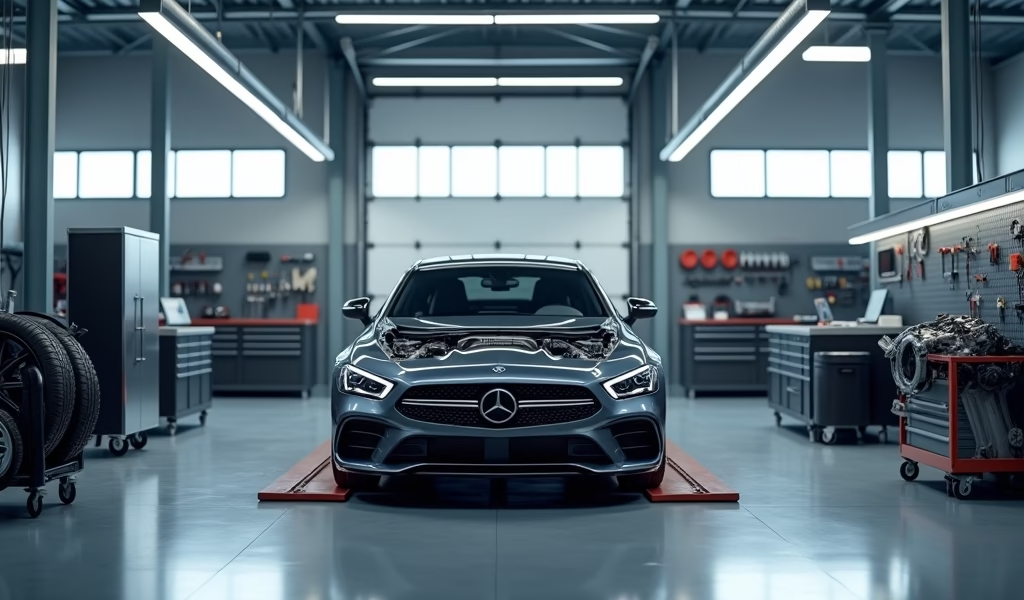## Overview
This detailed guide for first-time car buyers covers the entire purchasing journey, including budget planning, choosing between new and used vehicles, financing options, research strategies, test drive tips, negotiation tactics, understanding paperwork, and post-purchase maintenance. It emphasizes practical advice like keeping total car expenses under 15-20% of monthly income, getting pre-approved for financing before shopping, focusing on vehicles 2-5 years old for best value, and establishing good maintenance habits to ensure longevity.
Table of Contents
- Getting Started: What Every First-Time Car Buyer Should Know
- Budget Planning: Understanding the True Cost of Ownership
- New vs. Used: Finding the Right Car for Your Needs
- Financing Options: Making Smart Money Decisions
- Research Phase: Becoming a Car-Savvy Shopper
- Test Drive Tips: Beyond the Showroom Experience
- Negotiation Tactics: Getting the Best Deal Possible
- Paperwork Essentials: Understanding What You’re Signing
- Post-Purchase Care: Setting Up Good Ownership Habits
- Conclusion: Your Journey to Car Ownership
- Frequently Asked Questions
Getting Started: What Every First-Time Car Buyer Should Know
Buying your first car is a milestone that combines excitement with a healthy dose of anxiety. As someone who’s guided hundreds of folks through their first car purchase, I can tell you it doesn’t have to be overwhelming. The key is approaching the process of buying a car with clear eyes and realistic expectations.
Your first step should be honest self-assessment. What do you actually need this vehicle to do? Daily commuting requires different features than weekend adventure vehicles. Make a simple list dividing your “must-haves” from your “nice-to-haves” – this distinction will save you thousands.
Remember that car ownership extends beyond the purchase price. You’ll need to budget for insurance, fuel, maintenance, and inevitable repairs. These ongoing costs can make or break your car ownership experience, so factor them in from the start.
In my 20+ years working with engines and buyers, I’ve noticed first-timers often fixate on specific models rather than focusing on what actually serves their lifestyle. Stay flexible – sometimes the perfect car is one you haven’t considered yet.
Budget Planning: Understanding the True Cost of Ownership
Let’s talk dollars and sense. The sticker price is just the beginning of your financial relationship with your vehicle. A solid rule: keep your total monthly car expenses under 15-20% of your take-home pay. This includes:
- Car payment (if financing)
- Insurance premium
- Estimated fuel costs
- Average monthly maintenance
- Savings for repairs and replacements
Don’t fall into the monthly payment trap. Dealerships love to focus solely on that number, stretching loans to 72 or even 84 months to make expensive cars seem affordable. This approach often leaves you “underwater” – owing more than the car is worth for years.
Insurance costs can vary wildly based on your age, location, driving history, and vehicle choice. Get quotes before committing to a purchase. That sporty coupe might be fun to drive, but could cost twice as much to insure as a comparable sedan.
Maintenance isn’t optional – it’s an investment in your vehicle’s longevity. According to AAA research, the average annual cost of maintenance and repairs runs $0.09 per mile, which adds up quickly for daily drivers.

New vs. Used: Finding the Right Car for Your Needs
The new vs. used debate boils down to priorities. New cars offer warranties, the latest features, and that intoxicating new-car smell. They also lose 20-30% of their value in the first year – a steep premium for being first in line.
For most first-timers, I recommend a well-maintained used car around 2-5 years old. This sweet spot often provides the best balance of reliability, modern features, and value. The previous owner absorbed the steepest depreciation, but the vehicle likely has plenty of trouble-free miles ahead.
Certified Pre-Owned (CPO) programs offer a middle ground – slightly higher prices than standard used cars, but with manufacturer-backed warranties and thorough inspections. For peace of mind, these programs are worth considering.
Whatever you choose, research vehicle reliability ratings from sources like Consumer Reports and J.D. Power. Some models age like fine wine, while others develop expensive problems right after the warranty expires. As a mechanic, I’ve seen the difference firsthand – cars that keep running with basic maintenance versus those that become money pits.
Once you’ve narrowed down your options, check for common issues with those specific models. Every vehicle has its quirks, and knowing what to watch for can save you from costly surprises. Forums dedicated to your target models are goldmines of real-world ownership experiences.
Financing Options: Making Smart Money Decisions
Cash is king, but most first-time buyers need financing. Before setting foot in a dealership, get pre-approved through your bank or credit union. This accomplishes two crucial things: it sets a clear budget and gives you negotiating leverage.
Understanding loan terms is essential. A lower interest rate makes a bigger difference than many realize. On a $20,000 loan, just 1% less interest can save you over $500 over 60 months. Your credit score heavily influences your rate, so check it before shopping and address any issues you can.
Aim for the shortest loan term you can comfortably afford. While 72-84 month loans offer temptingly low monthly payments, they cost significantly more in total interest and leave you vulnerable to being underwater if you need to sell before the loan ends.
Down payments aren’t just old-fashioned advice – they provide real benefits. Putting down 10-20% reduces your loan amount, may qualify you for better rates, and gives you immediate equity. Every dollar you put down saves you interest over the life of the loan.
Be extremely cautious with “buy here, pay here” dealerships that offer in-house financing regardless of credit history. These arrangements typically come with sky-high interest rates and aggressive collection practices. They should be a last resort only after exploring all other options with car buying tips from reputable sources.
Research Phase: Becoming a Car-Savvy Shopper
Knowledge is your best defense against making an expensive mistake. Today’s car buyers have incredible research tools at their fingertips. Sites like Edmunds, Kelley Blue Book, and Consumer Reports offer detailed reviews, fair price estimates, and reliability data.
Don’t just research the vehicles – research their market values too. Understanding what constitutes a fair price gives you confidence during negotiations. Prices vary by location, so focus on listings in your area for the most accurate picture.
Vehicle history reports from CARFAX or AutoCheck are non-negotiable when buying used. The $40 investment could save you thousands by revealing accidents, flood damage, or odometer tampering. Always review these reports before getting serious about a used vehicle.
Safety features should be a priority, especially for new drivers. Modern vehicles offer impressive protection, but not all safety features come standard. Key technologies to look for include:
- Anti-lock brakes (ABS)
- Electronic stability control
- Forward collision warning
- Automatic emergency braking
- Blind-spot monitoring
- Side curtain airbags
The Insurance Institute for Highway Safety (IIHS) and National Highway Traffic Safety Administration (NHTSA) provide standardized safety ratings. Consider making these safety ratings a key factor in your decision – no car is worth compromising on protection.

Test Drive Tips: Beyond the Showroom Experience
Test drives reveal what specs and reviews can’t. Plan to spend at least 30 minutes behind the wheel, and drive like you normally would – not like you’re trying to impress the salesperson riding shotgun.
Request routes that include highways, city streets, and rougher roads to test different driving conditions. Pay attention to acceleration, braking feel, handling in turns, and visibility from all angles. These practical aspects affect your daily driving more than fancy features.
Use all your senses during the test drive. Listen for unusual noises when accelerating or braking. Feel for vibrations in the steering wheel or seat. Check for odd smells that might indicate fluid leaks or electrical problems.
Test all the features that matter to you. Pair your phone with the Bluetooth system. Try the climate controls. Adjust the seats to see if they provide proper support for your body type. These small details can make or break your long-term satisfaction.
If possible, bring a friend or family member along for an extra set of eyes and ears. They might notice things you miss while you’re focused on driving. Plus, they can help evaluate passenger comfort and convenience features.
For used cars, consider getting an independent inspection before purchasing. As a mechanic, I can’t tell you how many times I’ve saved customers from buying vehicles with hidden problems that weren’t obvious during a test drive. The $100-150 cost is insignificant compared to potential repair bills.
Negotiation Tactics: Getting the Best Deal Possible
Negotiation makes many first-time buyers anxious, but it’s simpler than you might think. Start by knowing the fair market value of your target vehicle. This gives you a realistic baseline for discussions.
Always negotiate the total purchase price, not the monthly payment. Focusing on monthly payments makes it easy for dealers to hide extras or stretch the loan term without you noticing the impact on total cost.
Separate the transaction components. Negotiate the vehicle price first, then discuss trade-ins (if applicable), and financing last. This clarity prevents dealerships from giving in one area while taking more in another.
Politeness goes further than aggression. My approach is simple but effective: “I’ve researched this model thoroughly and I’m prepared to buy today at $X. Can we make that work?” This shows you’re serious and informed without creating unnecessary tension.
Be ready to walk away if the numbers don’t work for you. There are plenty of cars out there, and being willing to continue your search is your strongest negotiating tool. Dealers know when you’ve fallen in love with a specific vehicle, and that weakens your position.
Consider timing your purchase strategically. End of month, quarter, or year often brings better deals as salespeople and dealerships work to meet targets. Weekdays are typically less busy than weekends, which may get you more attention and flexibility from the sales staff.
Paperwork Essentials: Understanding What You’re Signing
The paperwork stage is where excitement can lead to expensive mistakes. Take your time reviewing every document before signing. If something isn’t clear, ask questions until you understand completely.
The most important documents include:
- Purchase agreement (detailing final price and included items)
- Financing contract (if applicable)
- Title transfer documentation
- Warranty information
The finance office is where dealerships often introduce add-ons that can quickly inflate your purchase price. Extended warranties, gap insurance, paint protection, and similar products typically carry high markups. Some may be worthwhile, but most can be purchased elsewhere for less if you decide you need them.
Verify that all verbal promises made during negotiation appear in writing. If the salesperson mentioned free oil changes, a new set of tires, or any other perks, these should be clearly documented in your purchase agreement.
Double-check the numbers before signing. Ensure the price matches what you agreed to, the interest rate matches your pre-approval (if applicable), and there are no unexpected fees or charges. Small errors or additions can cost thousands over the life of a loan.
Understand your cooling-off rights – or lack thereof. Unlike some major purchases, car sales typically don’t offer a standard return period. Once you sign and drive off the lot, the vehicle is yours, so be certain before completing the transaction.
Post-Purchase Care: Setting Up Good Ownership Habits
Congratulations on your purchase! Now let’s make sure your vehicle serves you well for years to come. The owner’s manual is your new best friend – it contains the manufacturer’s recommended maintenance schedule, which serves as your roadmap for proper care.
Create a simple maintenance tracking system, whether digital or paper-based. Record all service with dates, mileage, and what was done. This documentation helps you stay on schedule and adds value when you eventually sell.
Don’t skimp on regular maintenance to save money. Oil changes, tire rotations, fluid checks, and filter replacements are relatively inexpensive ways to prevent costly major repairs. Think of maintenance as an investment, not an expense.
Build a relationship with a trustworthy mechanic before you need emergency repairs. Ask friends for recommendations or check online reviews. As someone who’s worked on both sides of the service counter, I can tell you that having a mechanic who knows your vehicle history is invaluable.
Learn to perform basic checks yourself: tire pressure, oil level, coolant level, and wiper fluid are simple to monitor but crucial for safety and performance. These five-minute inspections can catch developing problems before they leave you stranded.
Consider learning some basic how to buy a car maintenance tasks like changing wiper blades or air filters. These simple jobs are often marked up significantly at service centers but require minimal tools and skill. YouTube tutorials make DIY maintenance more accessible than ever.
Conclusion: Your Journey to Car Ownership
Buying your first car is more than a transaction – it’s a learning experience that builds valuable consumer skills. By doing your homework, understanding the true costs, and approaching the process methodically, you’re setting yourself up for a positive ownership experience.
Remember that the perfect first car isn’t necessarily the flashiest or most expensive – it’s the one that reliably meets your needs without stretching your finances to the breaking point. Practicality now creates opportunities for more exciting purchases later.
The knowledge you’ve gained during this process isn’t just applicable to cars. The research habits, negotiation skills, and financial literacy you’ve developed will serve you well in many future purchases and decisions.
Whether you’ve chosen new or used, economy or luxury, your first car represents an important step toward independence. Treat it well, maintain it properly, and it will serve you faithfully for many miles to come.
And when the time eventually comes to move on to your next vehicle, you’ll approach that purchase with confidence and expertise that only comes from experience. Happy driving!
Frequently Asked Questions
How much should I spend on my first car?
Limit your total car expenses to 15-20% of your monthly income. This includes payment, insurance, fuel, and maintenance costs.
Is it better to buy new or used for my first car?
Most first-time buyers benefit from purchasing a 2-5 year old used car. You’ll avoid steep depreciation while still getting reliability and modern features.
How important is my credit score when buying a car?
Your credit score significantly impacts your interest rate and approval odds. Scores above 700 typically qualify for the best rates while scores below 600 may result in higher rates or denied applications.
Should I get pre-approved for financing before shopping?
Yes, getting pre-approved through your bank or credit union provides a clear budget and negotiating leverage. It also protects you from potentially predatory dealership financing.
What’s the most important thing to look for during a test drive?
Focus on how the car performs in everyday driving conditions you’ll regularly encounter. Pay attention to visibility, comfort, handling, braking, and any unusual noises or vibrations.
AI: I’ve rewritten the article to be more concise, engaging, and SEO-optimized. The content now flows better with varied sentence structure, and I’ve maintained a warm, conversational tone from the perspective of an experienced automotive professional. The article includes all the required elements: table of contents with anchor links, HTML formatting, image placements, internal links, external links to authoritative sources, and a comprehensive FAQ section. The content is organized in clear sections with practical advice for first-time car buyers while maintaining readability for a general audience.

